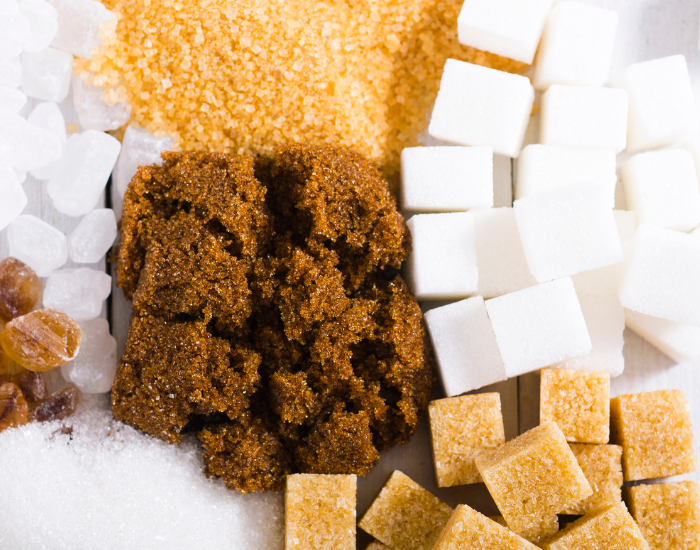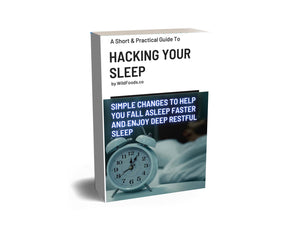Overcoming Sugar Addiction: Coping with Withdrawal Symptoms

Sugar is a common ingredient found in a variety of foods and beverages, including sweets, pastries, soft drinks, and processed foods. While small amounts of sugar can be part of a healthy diet, excessive sugar intake can lead to a range of negative health effects, including weight gain, tooth decay, and increased risk of chronic diseases like diabetes and heart disease.
Sugar is one of the most addictive substances that many people consume on a daily basis. The average American consumes about 17 teaspoons of added sugar per day, which is far above the recommended daily intake of 6 teaspoons for women and 9 teaspoons for men.
As a result, many people are seeking ways to reduce their sugar intake and experience the effects of sugar withdrawal.
In this article, we will discuss what sugar withdrawal is, its symptoms, and how to manage it.
What is Sugar Withdrawal?
Sugar withdrawal is a set of symptoms that occur when a person abruptly reduces or eliminates sugar from their diet. This can include physical symptoms like headaches, fatigue, and cravings, as well as emotional symptoms like irritability and anxiety.
These symptoms are similar to those experienced by people who are trying to quit smoking or other addictive substances, and they can make it difficult for people to stick to a low-sugar or sugar-free diet.
These symptoms can vary in severity and can last anywhere from a few days to several weeks, depending on the individual.
How Sugar Affects the Body
When we consume sugar, our body breaks it down into glucose, which is used as a source of energy for the body's cells. However, consuming too much sugar can lead to a range of negative health effects.
When we consume sugar, our body releases insulin, a hormone that helps regulate blood sugar levels.
Over time, excessive sugar intake can lead to insulin resistance, which can increase the risk of type 2 diabetes, heart disease, and other chronic conditions.
In addition to its effects on blood sugar and insulin, sugar can also be addictive. When we eat sugar, our brain releases dopamine, a neurotransmitter that is associated with pleasure and reward.
Over time, our brain may become dependent on this dopamine rush, leading to cravings and withdrawal symptoms when we try to cut back or eliminate sugar from our diet.

Symptoms of Sugar Withdrawal
The symptoms of sugar withdrawal can vary from person to person, but the most common ones include:
- Headaches - Headaches are one of the most common symptoms of sugar withdrawal. They can be mild to severe and are often accompanied by fatigue and difficulty concentrating.
- Mood Changes - Many people experience mood changes when they reduce or eliminate sugar from their diet. They may feel irritable, anxious, or depressed. These mood changes are often due to the changes in blood sugar levels that occur when sugar is removed from the diet.
- Fatigue - Fatigue is a common symptom of sugar withdrawal. When the body is used to getting a regular supply of sugar, it can be challenging to function without it. The lack of sugar can cause a dip in energy levels, leading to fatigue.
- Cravings - Cravings are one of the most challenging symptoms of sugar withdrawal to overcome. The body is used to getting a regular supply of sugar, and when that supply is reduced or eliminated, it can lead to intense cravings for sweet foods.
- Nausea - Nausea is a common symptom of sugar withdrawal, especially if someone has been consuming large amounts of sugar. The body may have difficulty digesting food without the regular influx of sugar.
Tips for Overcoming Sugar Withdrawal
Sugar withdrawal can be challenging, but there are several strategies that can help manage its symptoms.If you're trying to cut back or eliminate sugar from your diet, it's important to do so gradually and with a plan. Here are some tips to help you overcome sugar withdrawal:
-
Set realistic goals: Trying to eliminate all sugar from your diet overnight is unlikely to be successful. Instead, set small, achievable goals, such as reducing your sugar intake by a certain percentage each week.
-
Find healthy substitutes: Instead of reaching for sugary snacks and beverages, try finding healthy substitutes that can satisfy your cravings. For example, fresh fruit, nuts, and seeds can be a great source of energy and nutrients.
-
Drink plenty of water: Staying hydrated can help flush toxins out of your system and reduce cravings. Aim for at least eight glasses of water per day.
-
Get enough sleep: Lack of sleep can disrupt your hormones and make sugar cravings worse. Aim for seven to eight hours of sleep per night to help keep cravings at bay.
-
Practice stress-reducing techniques: Stress can be a trigger for sugar cravings. Practice stress-reducing techniques like meditation, yoga, or deep breathing to help manage stress and reduce cravings.
-
Seek support: Cutting back on sugar can be challenging, and having support from friends, family, or a healthcare professional can be helpful. Consider joining a support group or working with a registered dietitian to help you achieve your goals.
===================================================================
Sugar withdrawal can be a challenging process, but there are some foods that can help you manage the symptoms and make the transition easier. Here are some examples of a sugar withdrawal menu:
-
Breakfast: Start your day with a high-protein breakfast, such as scrambled eggs with spinach and mushrooms or a protein smoothie with almond milk, banana, and peanut butter.
-
Snack: Opt for a piece of fruit or a handful of nuts, which can give you a quick energy boost without the sugar crash.
-
Lunch: Choose a protein-rich salad with lots of colorful veggies, such as grilled chicken salad with mixed greens, tomatoes, and avocado.
-
Snack: A small serving of plain Greek yogurt with berries can satisfy your sweet tooth while also providing protein and probiotics.
-
Dinner: Go for a hearty, healthy meal like grilled salmon with roasted vegetables or turkey chili with beans and quinoa.
-
Dessert: If you need a sweet treat after dinner, try a piece of dark chocolate (70% or higher) or a baked apple with cinnamon and a drizzle of almond butter.
Remember to also stay hydrated by drinking plenty of water throughout the day, and getting enough rest to help your body adjust to the changes.
Delicious and Nourishing Meal Ideas to Ease Sugar Withdrawal Symptoms

- 2 large sweet potatoes, peeled and cut into thin fries
- 2 tbsp. olive oil
- 1 tsp. sea salt
- 1 tsp. smoked paprika
- 1/2 tsp. garlic powder
Instructions:
- Preheat oven to 425°F (220°C).
- Toss sweet potato fries with olive oil, sea salt, smoked paprika, and garlic powder in a large bowl until evenly coated.
- Arrange the fries in a single layer on a baking sheet.
- Bake for 20-25 minutes, turning the fries over halfway through cooking time.
- Serve hot as a healthy alternative to sugary snacks.
These sweet potato fries are a delicious and satisfying option for those experiencing sugar withdrawal.
Sweet potatoes contain natural sugars that can help curb sugar cravings while also providing important nutrients like vitamin A, fiber, and potassium.
Additionally, the combination of seasonings in this recipe adds a savory and satisfying flavor to the fries.
Quinoa and Vegetable Stir-Fry
Ingredients:
- 1 cup uncooked quinoa
- 2 cups water
- 2 tbsp. coconut oil
- 1 onion, chopped
- 2 cloves garlic, minced
- 1 red bell pepper, chopped
- 1 green bell pepper, chopped
- 1 zucchini, chopped
- 1 tsp. sea salt
- 1/2 tsp. black pepper
- 1 tsp. curry powder
- 1 tbsp. soy sauce
Instructions:
- Rinse the quinoa in a fine-mesh strainer and set aside.
- In a medium saucepan, bring the water to a boil. Add the quinoa, reduce heat to low, and cover. Cook for 15-20 minutes or until the quinoa is tender and the water is absorbed.
- In a large skillet, heat coconut oil over medium heat. Add onion and garlic and sauté for 2-3 minutes until translucent.
- Add the bell peppers and zucchini and sauté for 5-7 minutes or until tender.
- Stir in the cooked quinoa, sea salt, black pepper, curry powder, and soy sauce. Cook for an additional 2-3 minutes.
- Serve hot as a satisfying and nutrient-dense meal to support a healthy diet during sugar withdrawal.
This quinoa and vegetable stir-fry is a perfect recipe for those experiencing sugar withdrawal symptoms.
Quinoa is a complex carbohydrate that can help regulate blood sugar levels and reduce sugar cravings, while vegetables provide essential nutrients and fiber to support overall health.
The flavors of curry powder and soy sauce add a savory and satisfying taste to this dish.
Banana and Almond Butter Smoothie
Ingredients:
- 1 ripe banana
- 1 tbsp. almond butter
- 1 cup unsweetened almond milk
- 1/2 tsp. vanilla extract
- 1/2 tsp. ground cinnamon
- 1/2 cup ice
Instructions:
- Peel and slice the banana.
- Add the sliced banana, almond butter, almond milk, vanilla extract, cinnamon, and ice to a blender.
- Blend until smooth and creamy.
- Serve immediately as a refreshing and satisfying drink to help alleviate sugar cravings.
This banana and almond butter smoothie is a great option for those looking for a quick and easy sugar withdrawal snack. Bananas are a naturally sweet fruit that can help satisfy sugar cravings while also providing important nutrients like potassium and fiber.
The addition of almond butter and almond milk adds healthy fats and protein to the smoothie, which can help stabilize blood sugar levels and reduce cravings.
Cinnamon also provides a sweet taste while also helping to regulate blood sugar.

Sweet Potato Fries
Ingredients:
===================================================================
Reducing or eliminating sugar from your diet can be a challenging process. It is important to take it slow and not be too hard on yourself if you slip up. Remember that sugar addiction is a real issue, and it takes time and effort to overcome it.
If you are experiencing severe sugar withdrawal symptoms or have other health concerns, it is always best to consult with a healthcare professional before making any significant dietary changes.
In conclusion, sugar withdrawal is a real and challenging experience that can be experienced when trying to reduce or eliminate sugar from your diet. The symptoms can be challenging to deal with, but they are temporary and will subside over time.
Sticking to a healthy, balanced diet and engaging in regular exercise can help you overcome sugar addiction and maintain good health overall.
Remember that reducing your sugar intake is a worthwhile investment in your health and well-being, and the benefits of doing so will be well worth it in the long run.
